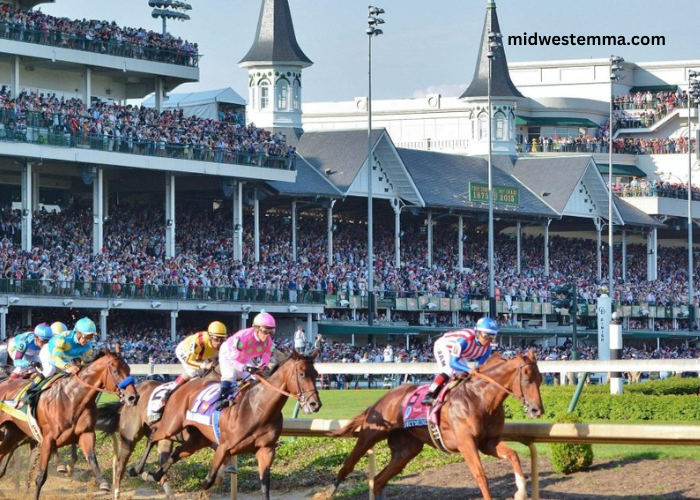In the world of horse racing, the pursuit of excellence is an unending journey. For bettors, owners, trainers, and enthusiasts, understanding the form of a racehorse is crucial. It’s here that Indice de Forme emerges as a critical tool, a secret language that unlocks the secrets behind a horse’s performance. In this article, we embark on a deep dive into the world of Indice de Forme, exploring its origins, methodologies, and how it influences the dynamic landscape of horse racing.
The Essence of Indice de Forme
Indice de Forme is a French term that translates to Form Index or Fitness Index in English. At its core, it’s a numerical representation that encapsulates the current condition, fitness, and performance potential of a racehorse. This index serves as a guiding star for all stakeholders in the horse racing world, from bettors looking for a winning edge to trainers fine-tuning their strategies.
The Evolution of Indice de Forme
The concept of Indice de Forme traces its roots to the early days of horse racing. While the term may have evolved over time, the fundamental idea remains the same—to quantify a horse’s readiness for competition.
Historically, horse racing enthusiasts relied on anecdotal evidence, visual assessments, and a touch of intuition to gauge a horse’s form. However, as the sport evolved and became increasingly competitive, a more systematic approach was needed.
This need led to the development of Indice de Forme systems, which brought science and data analysis into the realm of horse racing. These systems draw upon a wide array of factors and data points to provide a comprehensive evaluation of a horse’s current condition.
The Key Elements of Indice de Forme
To understand the inner workings of Indice de Forme, it’s essential to explore the key elements that contribute to this numerical assessment:
1. Recent Performances
One of the primary components of Indice de Forme is a horse’s recent racing history. This includes factors such as the number of races participated in, finishes (win, place, show), and the quality of competition faced. The consistency and results in these recent outings play a vital role in the index calculation.
2. Workouts and Training
A horse’s fitness is closely tied to its training regimen. “Indice de Forme” takes into account the intensity and frequency of workouts, as well as any significant changes in training routines. Trainers’ observations and assessments are also considered.
3. Health and Well-Being
The health and well-being of a racehorse are paramount. Any injuries, illnesses, or physical conditions that may affect performance are factored into the index. Veterinary assessments and medical records are invaluable in this regard.
4. Jockey Performance
The role of the jockey in a horse’s performance cannot be understated. Indice de Forme includes an evaluation of the jockey’s recent successes, strategies, and overall performance record. The partnership between horse and jockey is a key element.
5. Track Conditions
Track conditions, including factors like weather, track surface, and distance, have a significant impact on a horse’s performance. Indice de Forme considers how well a horse has adapted to varying conditions in recent races.
6. Previous Race Patterns
Analyzing past races and identifying patterns in a horse’s performance is a central element of Indice de Forme. This may involve assessing factors such as race type, distance preferences, and success on specific tracks.
The Calculations Behind Indice de Forme
The actual calculations involved in determining a horse’s Indice de Forme can vary depending on the system or organization using it. However, the process typically involves assigning numerical values to each of the key elements mentioned above and then aggregating these values to arrive at a final index score.
Some systems may also use weighted averages to emphasize certain factors considered more critical in assessing a horse’s form. The result is a numerical score that provides an overall snapshot of the horse’s fitness and readiness for the next race.
The Role of Indice de Forme in Betting
For bettors, Indice de Forme is a valuable resource that can significantly inform their wagering decisions. Here’s how Indice de Forme impacts betting strategies:
1. Selection of Horses
Bettors often look for horses with high “Indice de Forme” scores as potential contenders. These horses are perceived as being in good form and may have a better chance of performing well in an upcoming race.
2. Betting Strategies
Indice de Forme can influence the types of bets placed. For example, a horse with a high index score might be favored for a win bet, while horses with lower scores may be considered for exotic bets like exactas or trifectas.
3. Adjusting Wagers
Bet size and risk tolerance can also be influenced by “Indice de Forme.” Bettors may be more inclined to place larger bets on horses with high scores and smaller bets on those with lower scores.
4. Race Analysis
Indice de Forme encourages bettors to analyze races more comprehensively. It prompts them to consider not only a horse’s past performance but also its current condition and readiness.
The Human Element in Indice de Forme
While data and algorithms are essential components of Indice de Forme calculations, there’s also a human element at play. Trainers, jockeys, and other experts provide valuable input and assessments that are integrated into the index.
A trainer’s insights into a horse’s progress during workouts or a jockey’s observations during a race are invaluable. These professionals understand the nuances of the sport and contribute their experiential knowledge to refine Indice de Forme assessments.
Conclusion
Indice de Forme is a window into the soul of horse racing. It’s a tool that encapsulates the essence of the sport the dedication, the training, the partnership between horse and jockey, and the relentless pursuit of excellence.
For bettors, it’s a compass that guides them through the complexities of horse racing, helping them navigate the unpredictable waters with confidence. For trainers and owners, it’s a mirror that reflects the progress and readiness of their prized racehorses.
As horse racing continues to captivate the hearts of millions around the world, “Indice de Forme” remains an integral part of the journey. It’s a testament to the ongoing quest for perfection, where each race is a chapter in a story that never truly ends.









